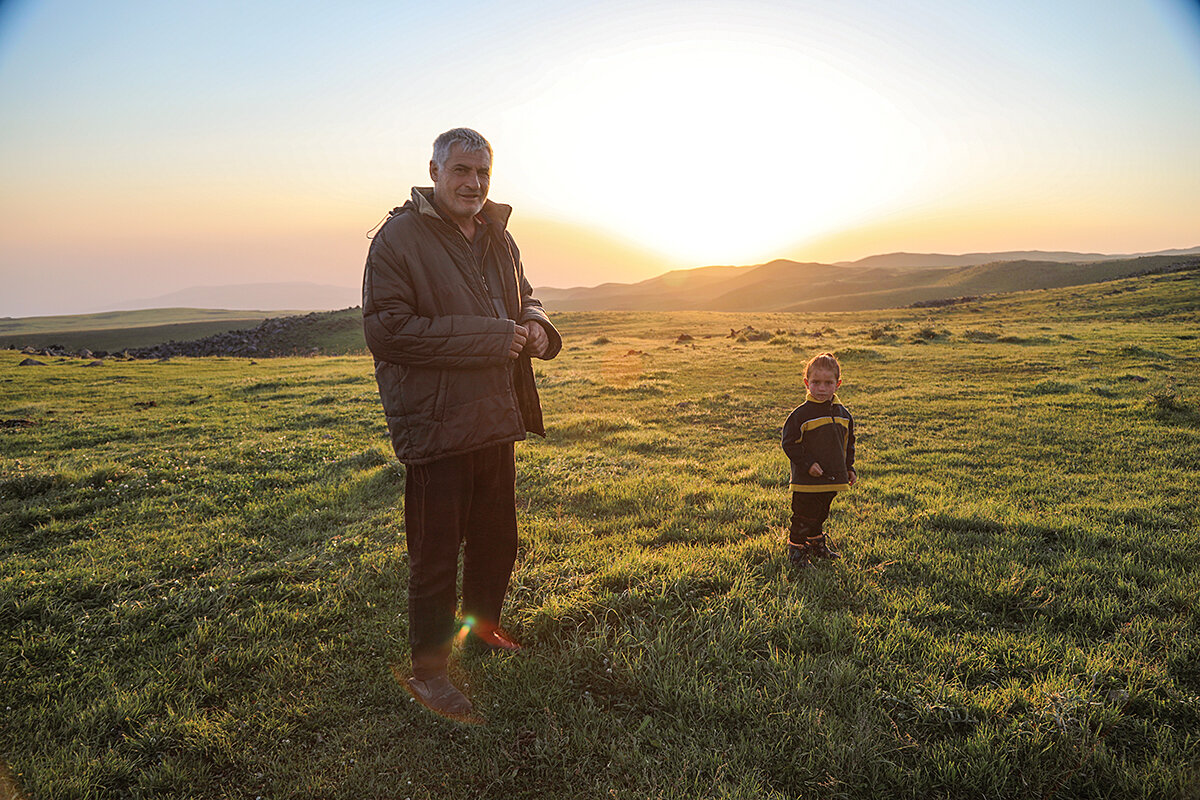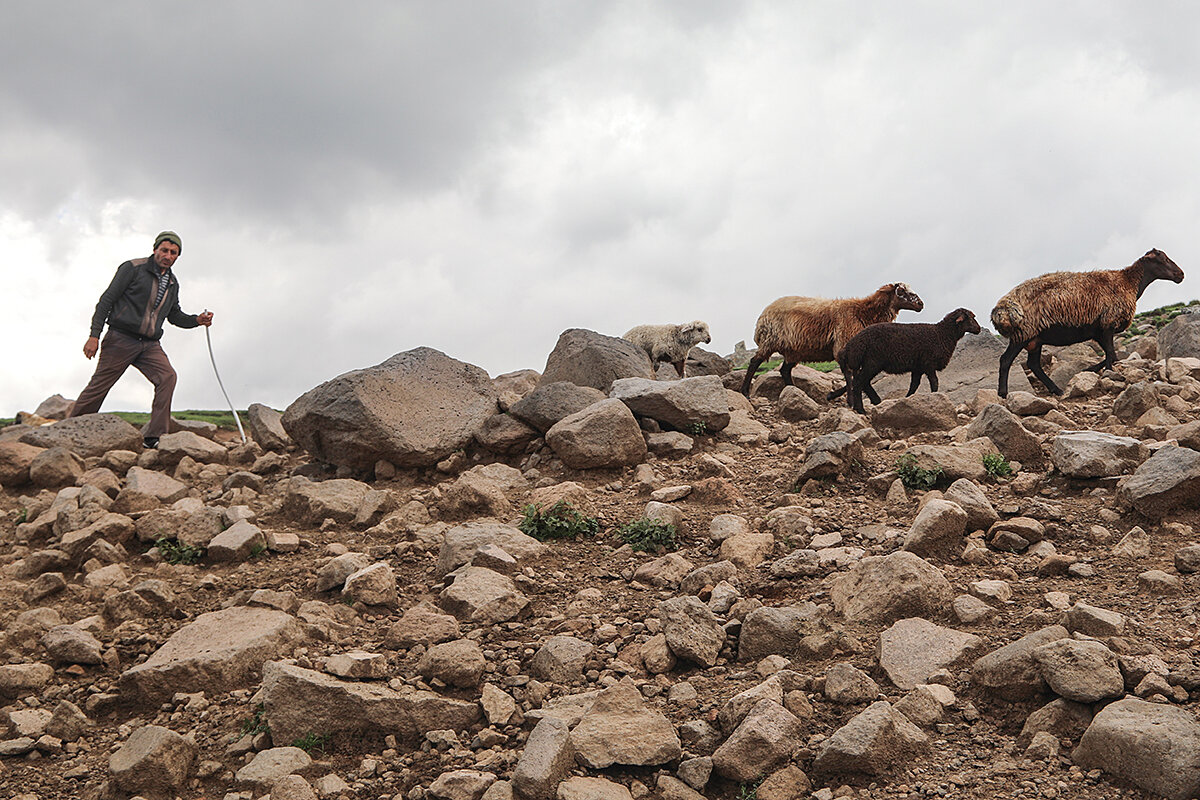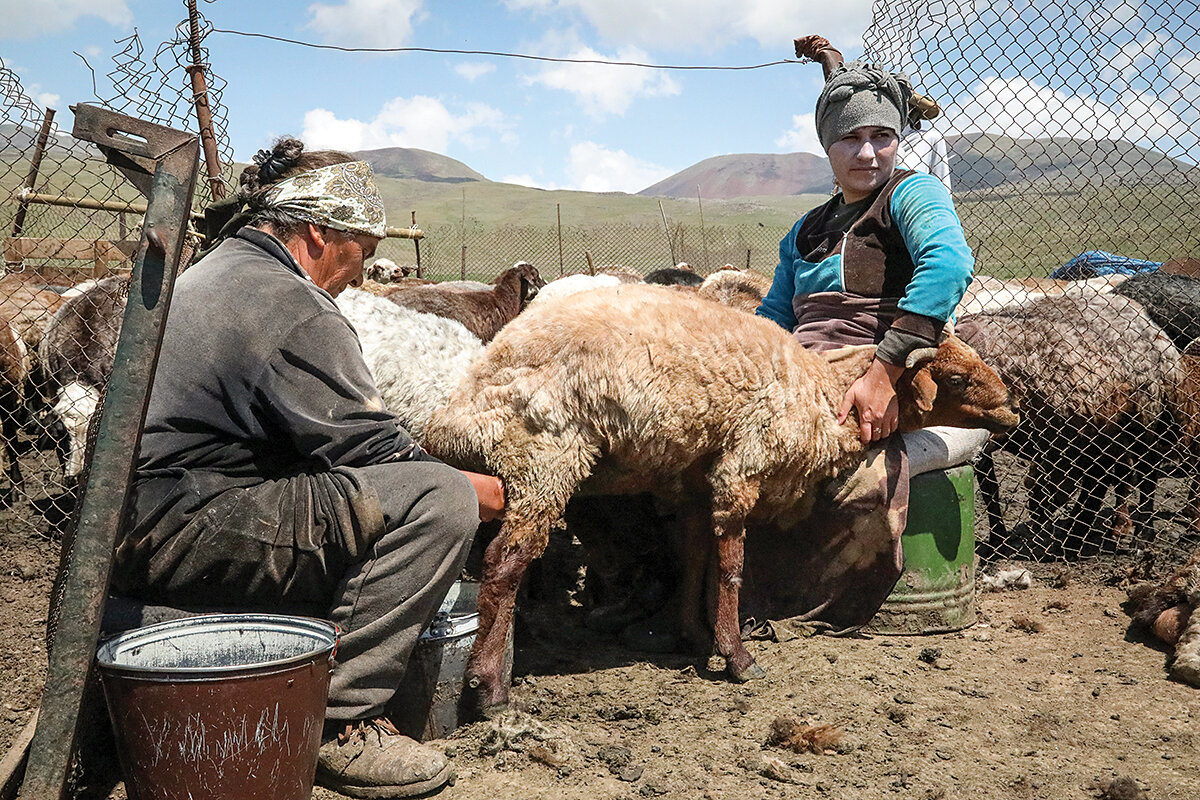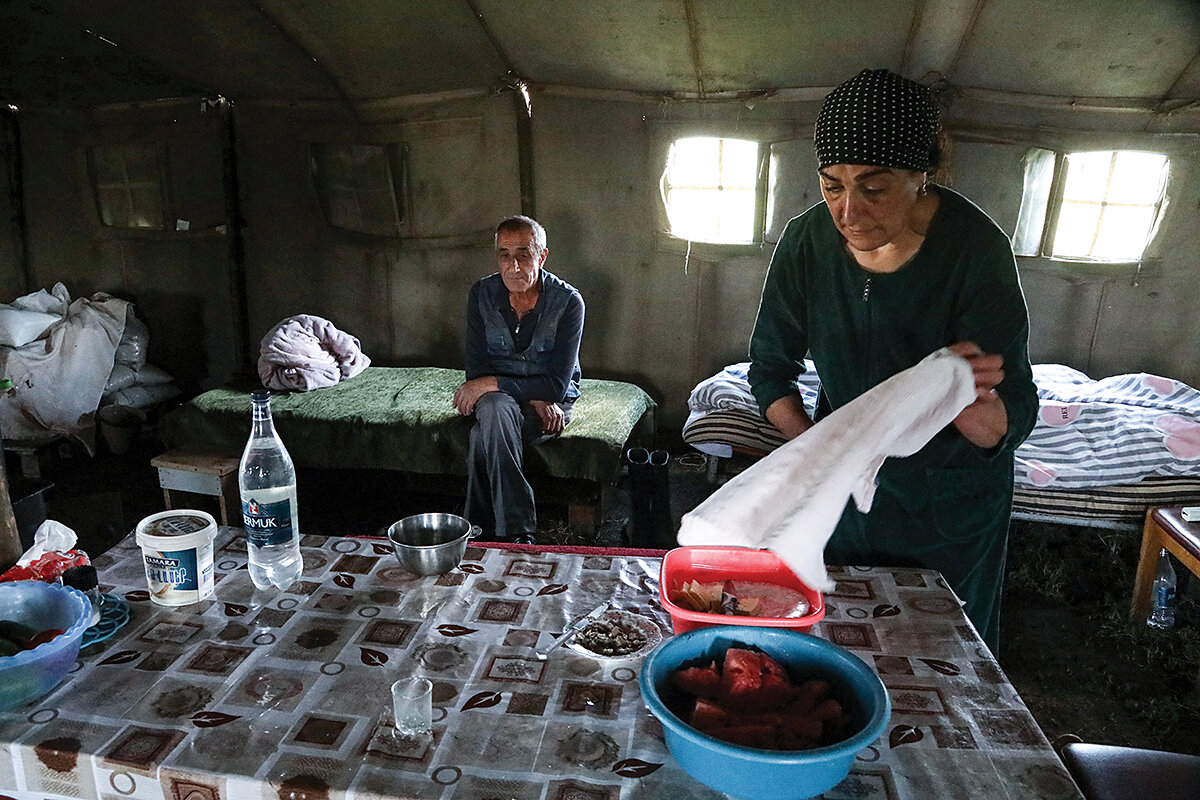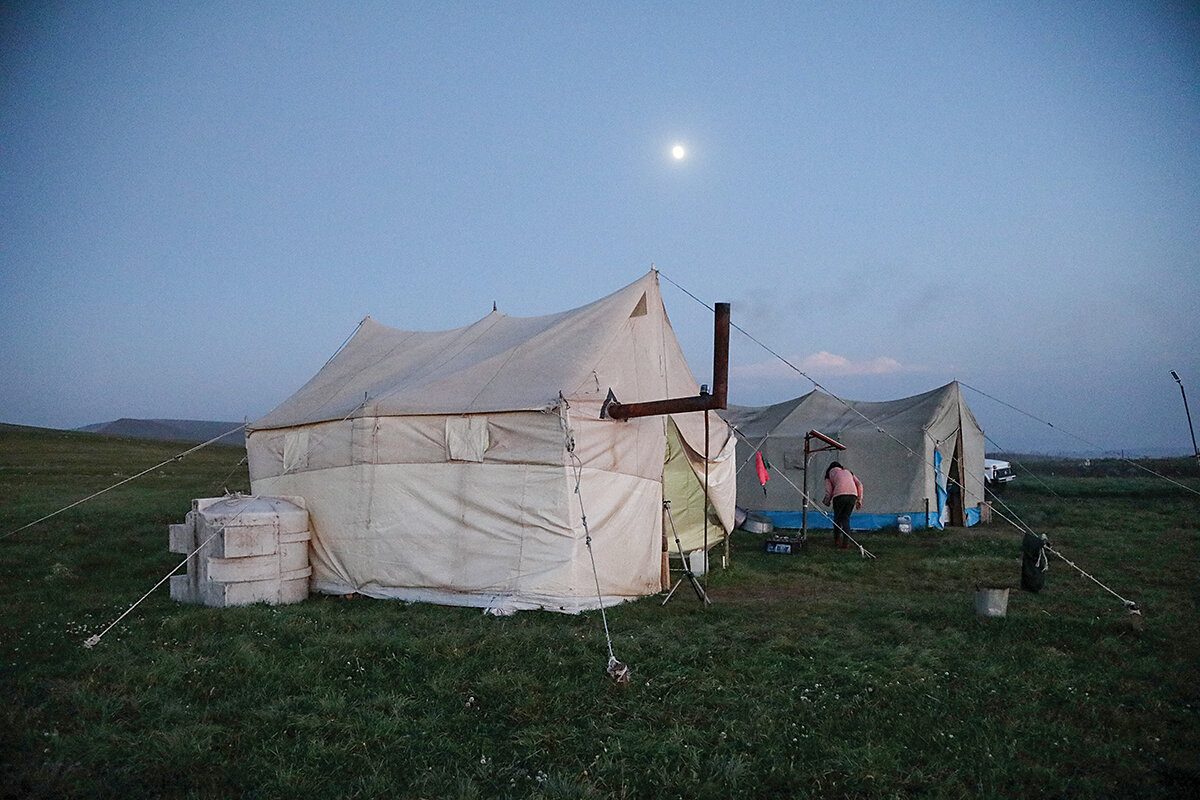In Pictures: Why Yazidi herders still traverse Armenian mountains
Loading...
| Mount Azhdahak and Mount Aragats, Armenia
As the winter snow melts, Yazidi herders lead sheep and cattle to Armenia’s highest pastures. Shepherds and their families spend spring, summer, and early autumn in tents and mobile homes atop the Aragats and Gegham mountains. The journey is one of the last vestiges of a nomadic past.
The largely Kurdish-speaking Yazidi people are Armenia’s largest minority. They have been persecuted in countries such as Iran and Iraq, including a 2014 Islamic State attack that killed thousands.
In Armenia, however, the Yazidi community has parliamentary representation, their own schools, and the freedom to practice their religion, which draws from ancient Iranian traditions and shares elements with Judaism, Islam, and Christianity. The country has also become a haven in recent weeks for ethnic Armenian refugees fleeing instability in the Nagorno-Karabakh enclave in neighboring Azerbaijan.
The shepherds begin each day with prayer, a tribute to the rising sun. As they guide their animals across the volcanic landscape, a subtle hierarchy emerges: wandering goats in the lead, followed by sheep, with Armenian Gampr dogs and a watchful shepherd bringing up the rear. Birds of prey, including golden eagles, scan the procession from distant rocks for a potential meal, though such opportunities are rare.
At day’s end, the animals are corralled, and a table is set with simple but plentiful dishes: cheese, yogurt, vegetables, and often meat. The shepherds will rise again at dawn, repeating the cycle until the first snows of fall.





